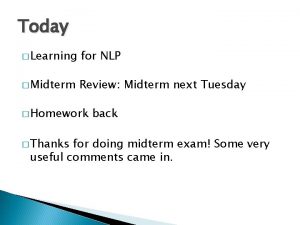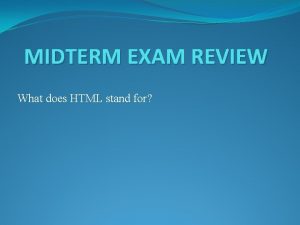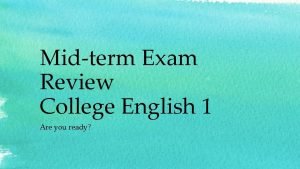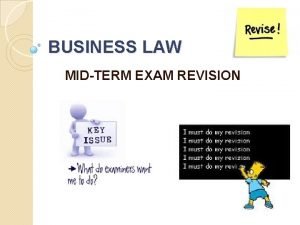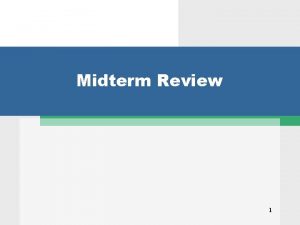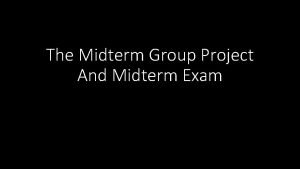MIDTERM EXAM LITERARY CONCEPTS FOR STUDY Exam will




- Slides: 4

MIDTERM EXAM LITERARY CONCEPTS FOR STUDY Exam will be Thursday/Friday, December 12 th/13 th

LITERARY CONCEPTS – DESCRIPTIVE LANGUAGE • Imagery – descriptive language that appeals to any of the five senses: sight, sound, taste, touch, smell • Figurative Language – descriptive language that is a way of saying one thing in terms of something else, through indirect or non-literal comparison to clarify understanding, not obscure it. (The Big Three: simile, metaphor, personification) • Simile – an explicit descriptive comparison between two things using words such as like, as, than, appears, or seems. • Metaphor – an implicit descriptive comparison between two unlike things, without words such as like or as; metaphor asserts the identity of two dissimilar things. • Personification – descriptive language that gives human characteristics to non-human or inanimate objects. • Symbol – something that represents something else; an object, person, place, event, or action intended to suggest more than its literal meaning. (Unlike a metaphor, a symbol is actually in the text. )

TRADITIONAL NARRATIVE SEQUENCE … REVIEW What comes first? • exposition – the background information the reader needs to make sense of the situation in which the characters are placed And then what happens? • narrative hook – the introduction of an intriguing element or possibility into a story to draw the reader into the narrative And where do we go from there? • rising action – a complication that intensifies the situation of the characters and gives the plot momentum—often initiated by a narrative hook And where does that lead? • climax – the moment of greatest emotional tension in the narrative; the conflict reaches its highest point What comes last? • resolution – the conflict of the narrative is resolved in some way (for good or ill)

FOUR TYPES OF IRONY � verbal irony – what is said is contrary to what one would expect under the circumstances � (ex. “I was infamous among my peers; I’ve never been so popular since. ”) � situational irony – what actually happens or is the case is contrary to what one would expect � (ex. The fire department building burns down. ) � dramatic irony – a character believes something the reader knows to be untrue. § (ex. The hero trusts a man whom the reader knows to be the arch villain in disguise. � cosmic irony – forces of nature intervene and interrupt careful human endeavor � (ex. Dr. Frankenstein is struck by lightning instead of his monster creation.
